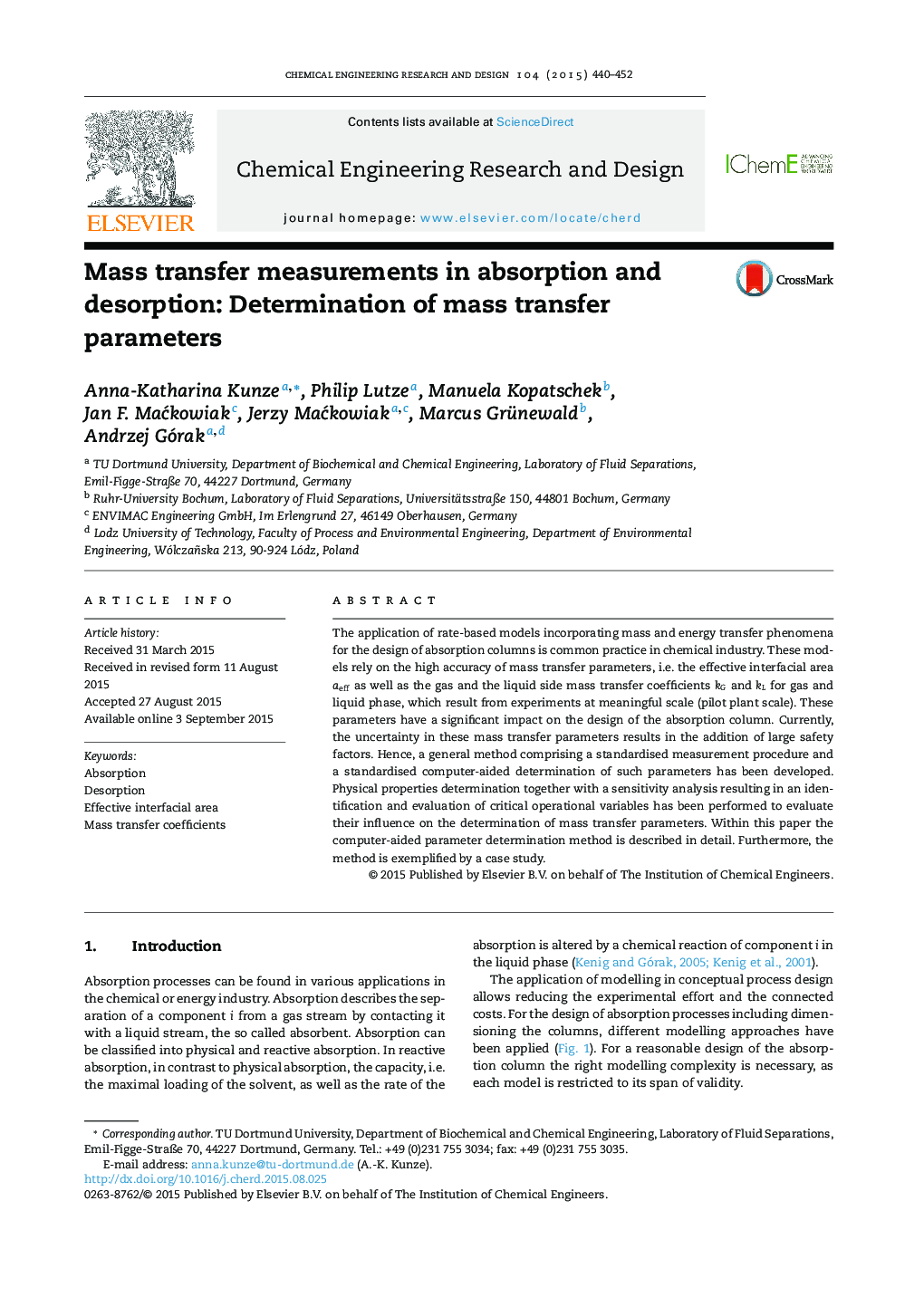| Article ID | Journal | Published Year | Pages | File Type |
|---|---|---|---|---|
| 7007030 | Chemical Engineering Research and Design | 2015 | 13 Pages |
Abstract
The application of rate-based models incorporating mass and energy transfer phenomena for the design of absorption columns is common practice in chemical industry. These models rely on the high accuracy of mass transfer parameters, i.e. the effective interfacial area aeff as well as the gas and the liquid side mass transfer coefficients kG and kL for gas and liquid phase, which result from experiments at meaningful scale (pilot plant scale). These parameters have a significant impact on the design of the absorption column. Currently, the uncertainty in these mass transfer parameters results in the addition of large safety factors. Hence, a general method comprising a standardised measurement procedure and a standardised computer-aided determination of such parameters has been developed. Physical properties determination together with a sensitivity analysis resulting in an identification and evaluation of critical operational variables has been performed to evaluate their influence on the determination of mass transfer parameters. Within this paper the computer-aided parameter determination method is described in detail. Furthermore, the method is exemplified by a case study.
Related Topics
Physical Sciences and Engineering
Chemical Engineering
Filtration and Separation
Authors
Anna-Katharina Kunze, Philip Lutze, Manuela Kopatschek, Jan F. MaÄkowiak, Jerzy MaÄkowiak, Marcus Grünewald, Andrzej Górak,
